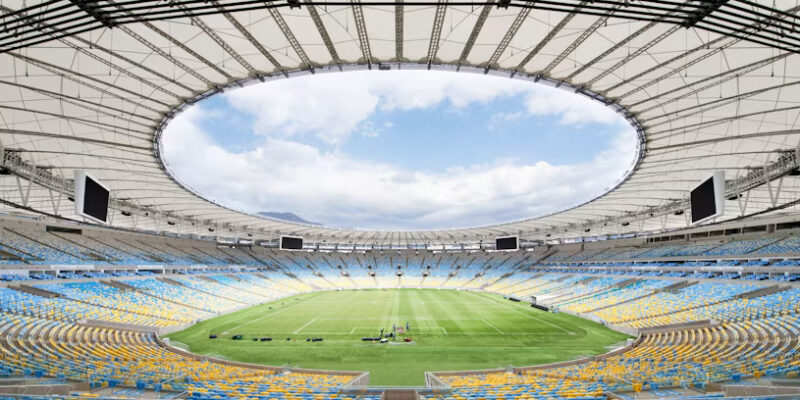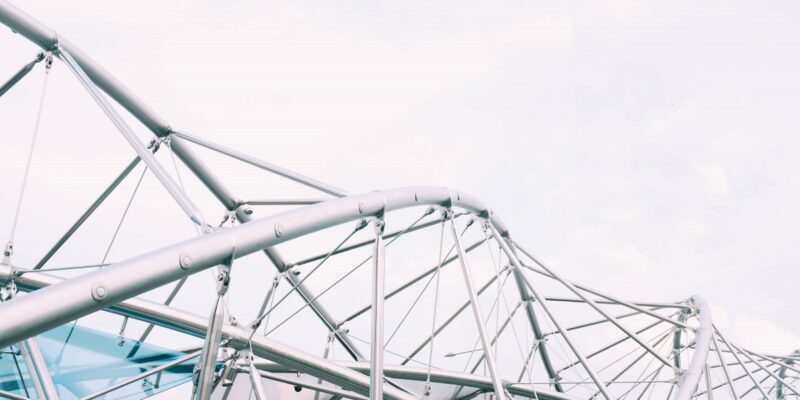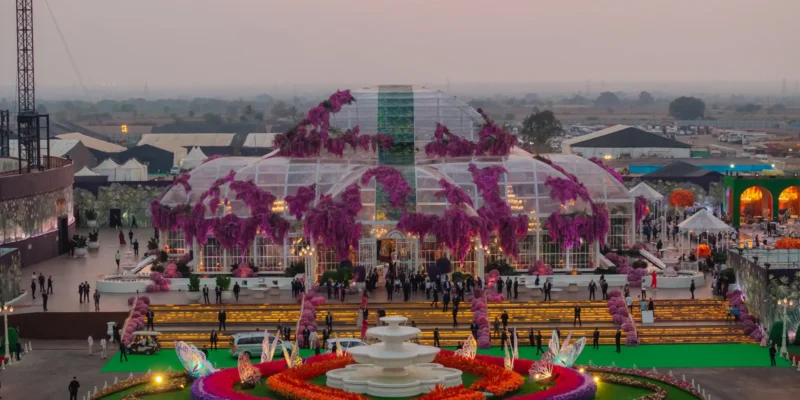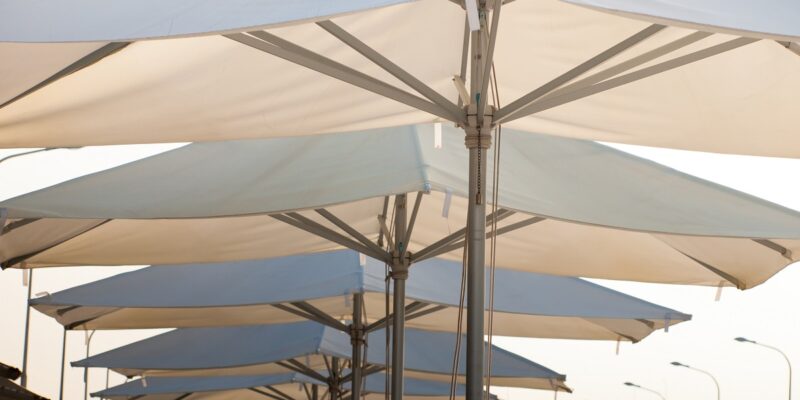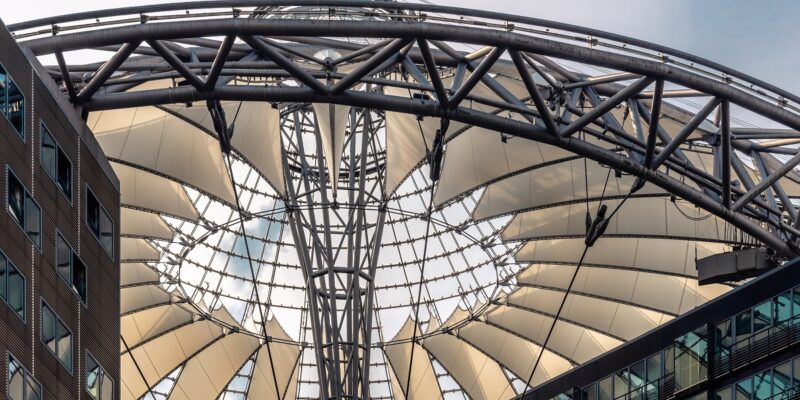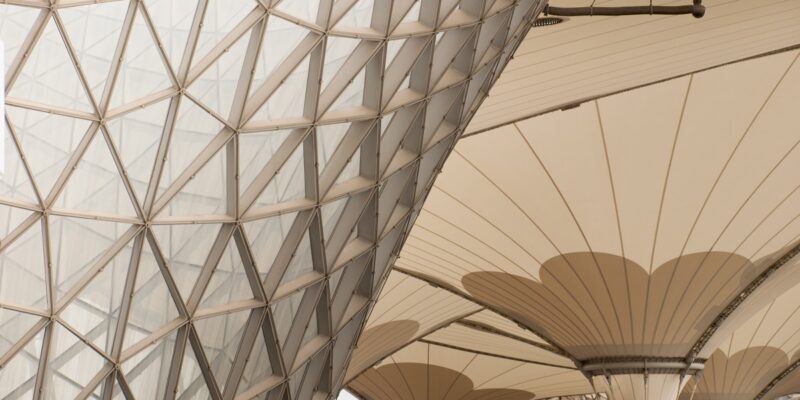Tensile structures have revolutionized the way we design and build, offering unparalleled
flexibility, durability, and aesthetic appeal. At Whiteshed Solutions LLP, we specialize in
delivering innovative tensile structure solutions for various industries. In this blog, we’ll
explore the diverse applications of tensile structures and their benefits.
Where Are Tensile Structures Used?
Tensile structures are some of the most exciting architectural designs today. They’re
recognized for their unique aesthetics and innovative use of materials. These structures can
span large areas without support columns, you might be wondering, where are tensile
structures used? Let’s explore their varied applications and see why they are gaining
popularity in modern architecture. Their design often results in open spaces filled with
natural light, which is appealing in many settings.
Stadiums and Sport Venues
One of the most common applications for tensile structures is in stadiums and sports
venues. Iconic stadiums worldwide utilize these designs to cover large areas while retaining
the ability to attract high crowds.
For example: Jawaharlal Nehru Stadium (New Delhi) – features an eye-catching
membranous exterior that changes colors. This flexibility not only enhances the game-day
experience but also serves as an iconic emblem for the team.
Architectural Landmarks
Many architectural landmarks and public buildings utilize tensile structures for their
impressive designs. These structures create an architectural statement while fulfilling the
need for usable space.
A great instance is the Sardar Patel Stadium (Ahmedabad) – Cable-stayed roof with tensile
fabric. Which is composed of a series of connected cables and fabrics. This revolutionary
design showcases the blend of beauty and utility, helping structures stand out while being
functional.
Expo and Event Pavilions
At expos and conventions, architects favor tensile structures for exhibition pavilions. Their
ability to create adaptable and expansive spaces is why many businesses prefer them for
showcasing their products and innovations.
Transportation Hubs
Tensile structures can transform ordinary transportation hubs into architectural marvels.
Airports and train stations enjoy using these designs for their canopies and waiting areas.
Take Indira Gandhi International Airport (New Delhi) as an example. The terminal uses
tensile structures to provide an interactive space, improving both aesthetics and the
traveler experience. The open design enhances natural light and encourages a smoother
flow of passenger traffic.
Outdoor Spaces and Gardens
Many public parks and gardens integrate tensile structures to enhance leisure space. These
canopies offer shade to visitors, improving overall comfort.
Tensile canopies are also common in places like botanical gardens. They provide shelter for
plants and visitors alike, allowing events, concerts, or other activities to occur regardless of
weather conditions.
Shopping Malls and Commercial Spaces
Shopping malls increasingly use tensile structures for their roofing or atriums. The open
geometry promotes an inviting atmosphere and often works with natural light for energy
efficiency.
Many malls combine tensile structures with natural elements like gardens. This modern
fusion creates a delightful shopping experience and refreshes urban areas.
Educational Institutions
Schools and universities use tensile structures prominently on campuses. They not only
provide shaded outdoor classrooms but also serve as areas for relaxation and gathering.
An excellent example is the University of Arkansas’s outdoor spaces, where tensile canopies
create interactive areas. These designs encourage student collaboration while enhancing
the campus’s visual appeal.
Concert Halls and Theaters
In the realm of performing arts, tensile structures play a critical role in shaping concert halls
and amphitheaters. Their flexible designs ensure excellent acoustics and appealing visuals.
For instance, National Centre for the Performing Arts (NCPA), Mumbai features a striking
tensile roof that creates a dramatic atmosphere during performances. Unique designs like
this take the attending experience to a whole new level.
Tensile structures have revolutionized the architectural landscape, offering unparalleled
flexibility, durability, and aesthetic appeal. From iconic stadiums to sleek transportation
hubs, tensile structures have become an integral part of modern infrastructure. At
Whiteshed Solutions LLP, we specialize in designing, engineering, and installing tensile
structures that cater to diverse needs.

